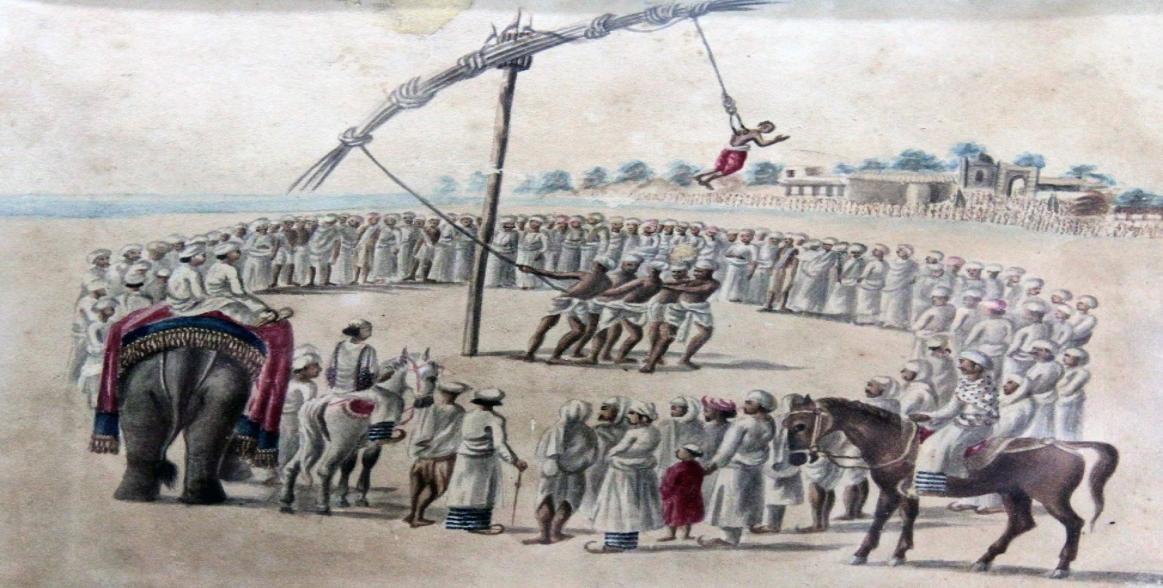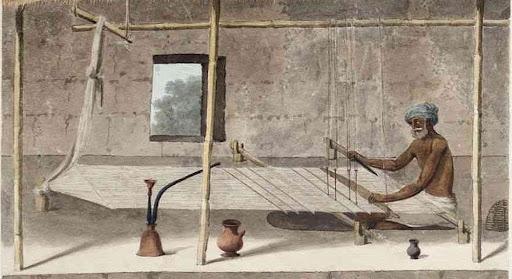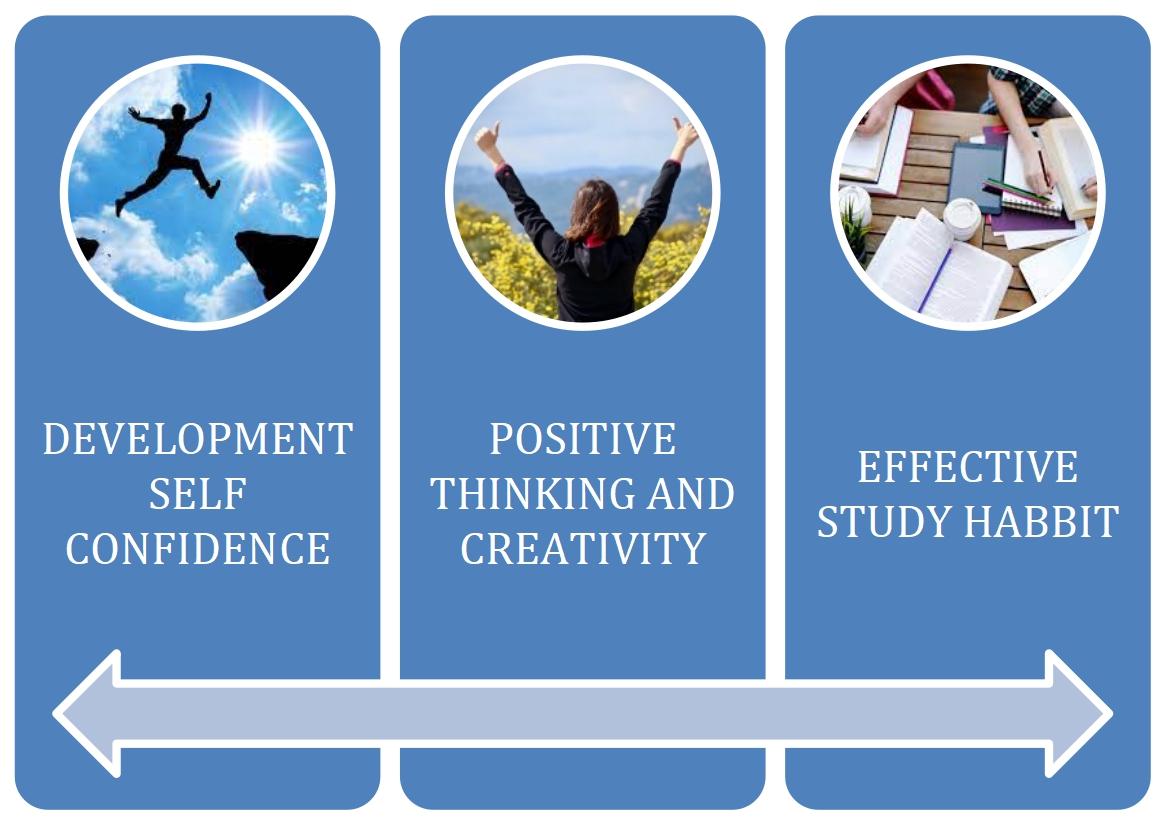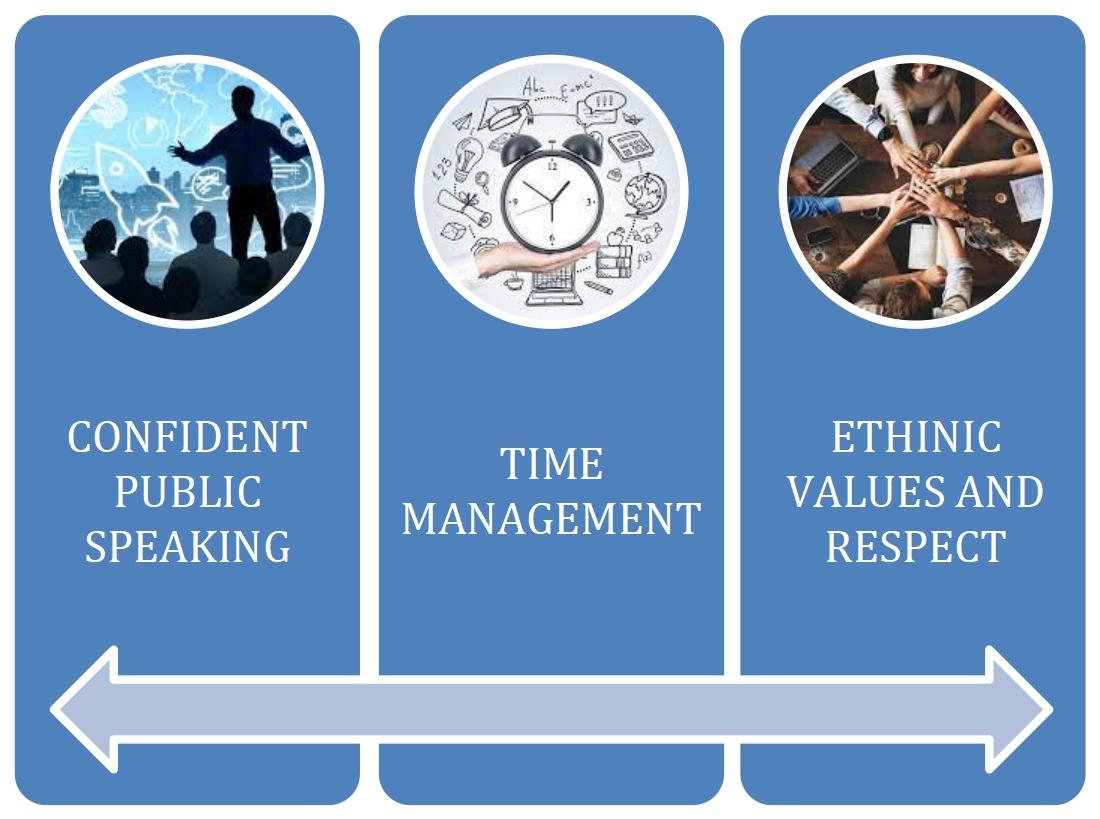
6 minute read
Table 4.3
FEATURES: It was the first time when any art form got recognition and popularity by showcasing the life of common people instead of the Royals. It was an art of commons. The Patna Kalam Paintings are painted directly by the brush without making outlines by pencil and this technique of painting was known as ‘KajliSeahi‘ . The brushes and colours used in this art form were created by their artists only. Colours used in the Patna kalam art form were mainly extracted from natural sources like minerals, flowers, fruits, the bark of trees, The Patna kalam painting was mainly done on paper, mica, elephant teeth, and cotton cloths. The paper used in these art forms was generally made up of waste paper (lugdhi) or bamboo sheets Some paintings of this form are also seen on Silk and Taant.

Advertisement
Figure 4.16
4.2.11 Language:
There is no specific and recognized language of this district. Generally spoken dialect is Magahi. Generally people understand, speak, and write Hindi and Urdu. But in official communication they have to use Hindi/Urdu, which can be taught here in our skill development centre.
4.2.12 Environmental degradation:
In recent studies by WHO it has been shown that Gaya’s AQI reading was 149 ( lies between very unhealthy-unhealthy) which is higher than even larger and more populated cities like patna and delhi. Acc. To local municipality only action taken so far is ban of single use plastic.There’s a sharp drop was recorded in 2020 of 46.3 µg/m³ but this could be artificially lower due to the restrictions put into place because of the COVID-19 pandemic.But its just temporary. This level is not constant throughout the year: Air pollution is governed by many variable factors such as temperature, wind speed and direction and the level and strength of sunlight. So, There’s a sudden need to make people aware of this fact and Educate them how to control it.By introducing some Awareness Sessions in our institute.

Figure 4.17
S.No. Main Course Sub-Course
Table 4.2
Time Duration Area Required Eligibility(min )
1 Handicrafts & Painting
Stone Crafts, Madhubani Paintings, etc 2 Language Foreign Language and English Fluency 1-6 months Hall Nil
3 months 1 classroom 10th/12th pass
3
Skill Upgradation Pattal Making, etc Up to 2 months 1 classroom and 1 hall
4 Dress Making Needle work, Sewing, etc 1-3 months Hall
5 Diploma Courses Fine Arts, Interior Designing, etc 1 year 2 classrooms and 2 labs Nil
8th
10th pass
Aims and Objectives:
The aim of social upliftment of the underprivileged who can avail the facility to join these skill development courses. Helping youth to discover their interests, aptitudes and potentialities. Guidance for choice of appropriate courses and future career. Maximizing their potentialities and boosting self-confidence. Offering vocational courses simultaneously with the regular degree courses. Provide training in various trades that are in high demand in society and have good job prospects. Preparing women for economic independence.
PROS:
Preservence Preservence of old and extinct art form and painting all over india. And to provide them a platform .
Social Interaction One of the greatest successes of traditional art classes, is that it fosters social interaction and peerlearning.
Individual Needs The ability to tailor open art classes to fit the needs of each individual student, is another reason why personalized instructor-led art classes are so effective and it is needed . Financially independent
This programme will make women independent they can earn and star their small business offline as well as online. Provide employmentThis art-form will provide employment to those people who already these art-forms as they can teach them. CONS: To master the art-form it may take long time so may be many people may not be able to attend and do work on time and properly. Artform and paintings cannot be learn online it needs proper teaching and learning in offline mode Because of low literacy rate its difficult to motivate and influence them to learn this skill.
4.3 Computer Training Courses and Workshops
4.3.1 Computer Training Courses The collapse of networking industry, the world economic crisis of 2008-2011, and visa restrictions for international specialists and students changed dramatically the student population in colleges and universities nation-wide. Enrolment continues to decline dropout students, undergraduate and graduate students particularly for small computer science programs, which heavily depend on the international students’ enrolment. At the same time, companies still demand fewer, but better prepared computer engineers with solid knowledge and hands-on experience.
Table 4.3
Courses Duration
Computer Basics Network Technologies Operating Systems 1 month 1 month 1 month
Multimedia & Web Development Knowledge based Systems Reading & Research Computer System Fundamental Algorithm 2 months 1 month 2 months 2 months 1 month
PROS:
Introduce students to fundamental concepts in specific computer-science areas and some of their relevant applications. Have students take an active role in their learning by experimenting with various techniques and software tools. Instruct students in writing overview papers on modern computing technologies and in conducting their own research studies.
CONS: Good time management skills necessary. People with disabilities may need personal education. Hard to get financial support for this course.
4.3.2 Workshops A workshop may introduce a new idea, inspire participants to further explore it on their own, or may illustrate and promote actual process practice. It is a great way to teach hands-on skills as it gives learners an opportunity to try out new methods and fail in a safe environment.


Figure 4.18 Figure 4.19
PROS: 1. Assessment or Evaluation:
Feedback can be difficult to make, but it is a big step in the process for professionals in building a career. Sincere, constructive criticism arising from attending a workshop will improve your work as a professional, especially when it comes to prominent instructors. 2. Novel Ways of Thinking:
Everyone does not have the same view of the world, and their understanding of something may differ dramatically from yours. Attending a workshop serves just this. You can get a remarkably unique or new perspective altogether from other attendees. Sometimes you can even create something awesome in your career by asking their thoughts or inputs on something you might not even know or have heard of. To grow, we must be open to new ideas, new ways of doing things, or new ways of thinking. It is rightly said that you must learn a new way to think before you can master a new way to be! 3. Opportunities for Networking:
Building new relationships and meeting new connections are important to personal growth. A workshop gives you as the professional the best opportunity to meet other people who share your interests. It is always a pleasure to meet someone with the same enthusiasm that you do. Attending a workshop is a great way to meet other people in your area with shared interests.





